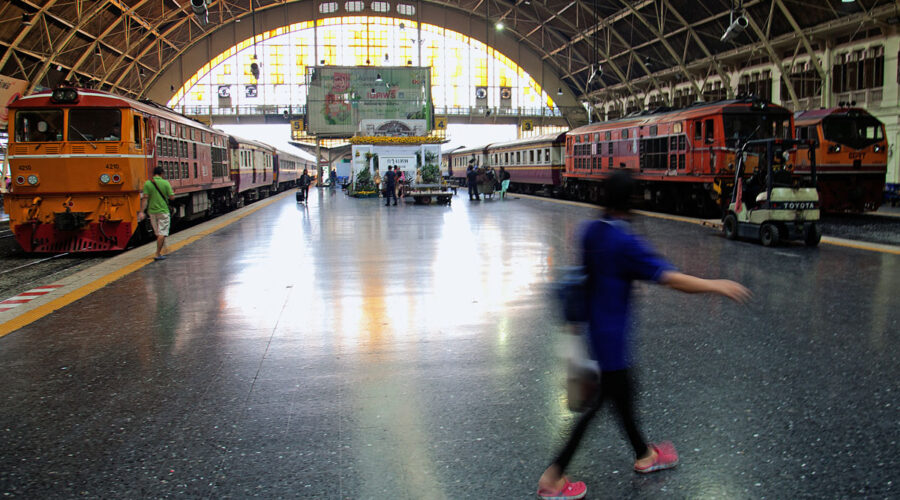Riding the Thai Rattler: a Kingdom of Rails
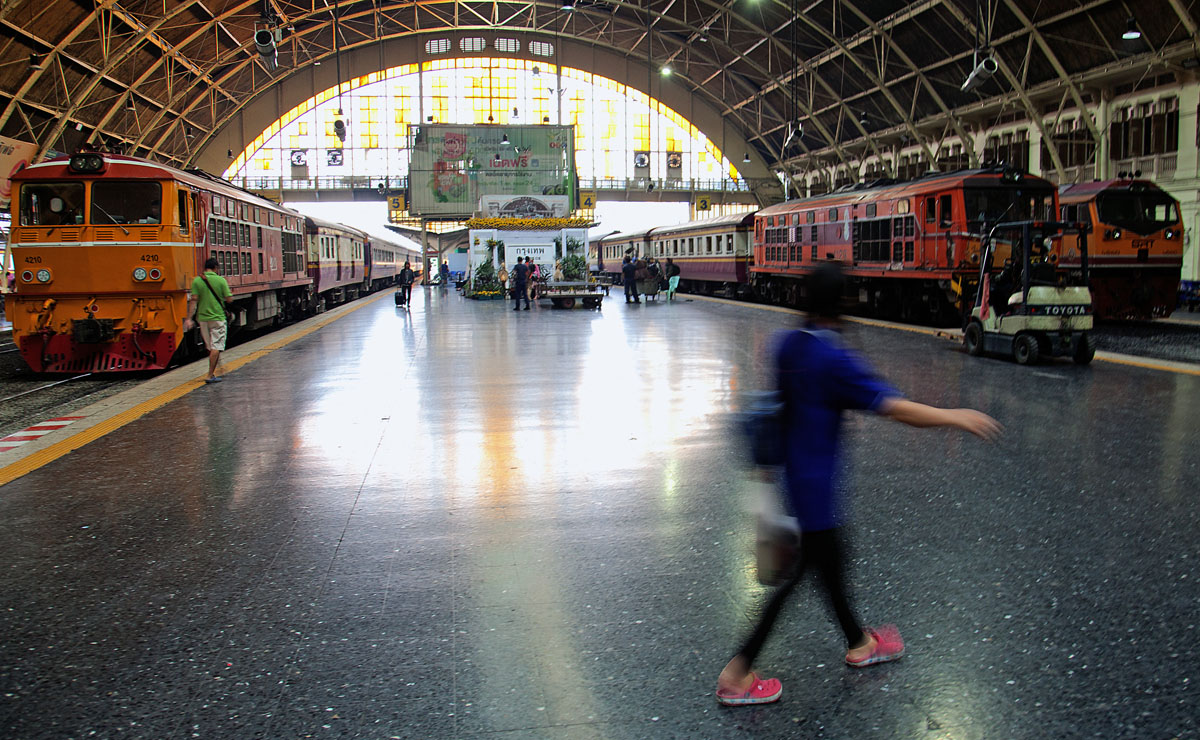
Bangkok’s grand Hualamphong terminus is at the heart of a national rail network stretching from Nong Khai to Hat Yai, and beyond. The station, with its Italianate facade and a vast, vaulted roof, was built in 1916 by the modernising ruler, King Rama V and is a throwback to the glory days of steam rail. Hualamphong lends your journey a thrill of ceremonial departure but go see it soon, before “redevelopment” occurs. Meanwhile, here are few Thailand rail samplers.
Guest blogger John Borthwick takes to the rails across the Kingdom.
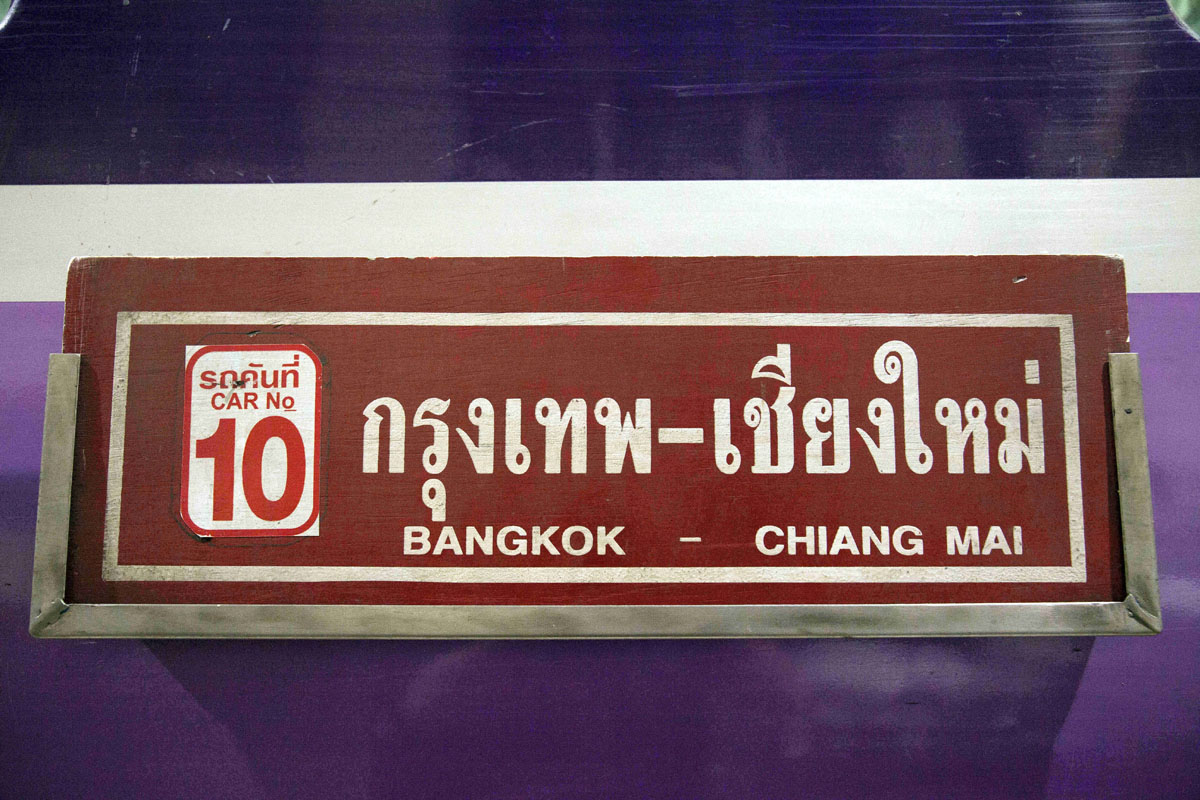
Bangkok—Chiang Mai Express. The night express to Chiang Mai is Thailand’s classic rail journey. Step aboard for the 750-km ride and be ready to rock all night (quite literally) on the narrow, one-metre gauge track. A snappily dressed State Railways inspector checks your ticket, followed by a caterer who takes meal orders. The carriages (ex-Japan Rail) are tired but clean. Stretch out on a reserved bunk and with railroad songs humming through your head fall asleep to the heavy metal lullaby of steel wheels on rackety rails. Wake in time for breakfast in Chiang Mai. This service is so popular with foreign visitors it could be re-named the Farang Express.
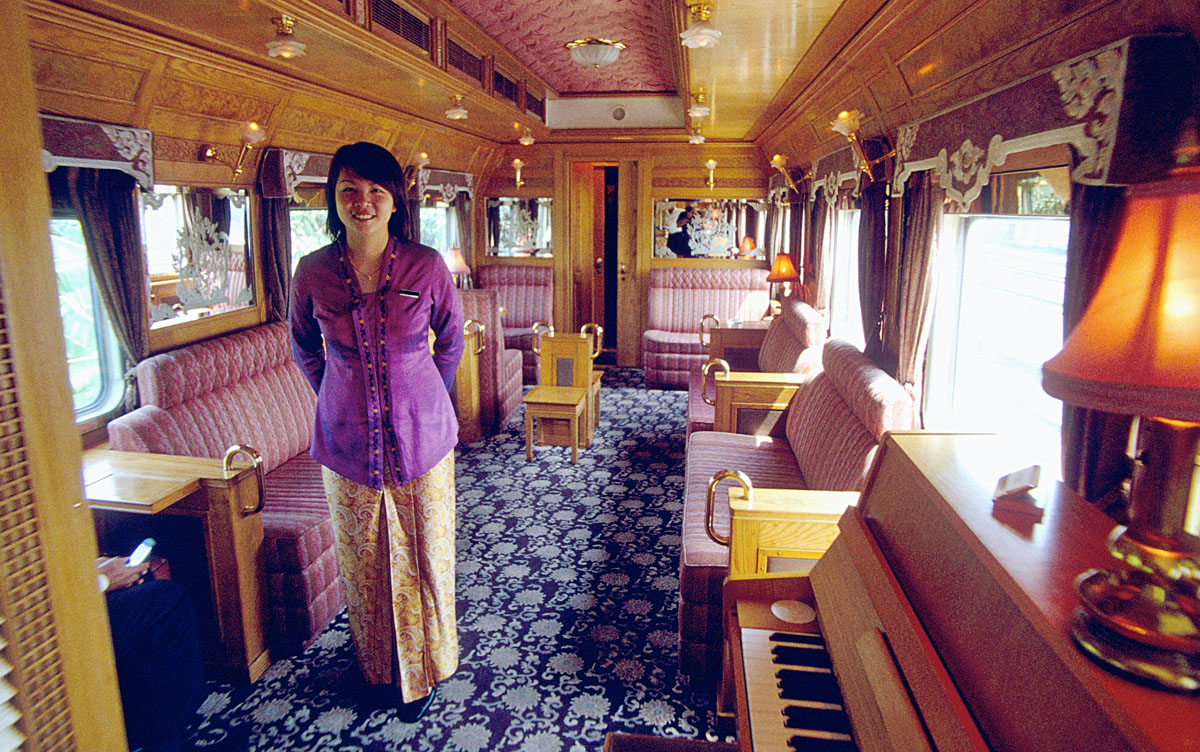
Eastern & Oriental Express. On a train that’s a rolling work of art you can live out any “retro-Raj” fantasies (should have ‘em) during a three-night, four-day luxury rail cruise between Bangkok and Singapore, or vice-versa. To stand at the train’s rear-end, open-air viewing platform and watch Thailand and Malaysia slip away behind you, green and templed from dawn til dusk, is one of the finest perspectives anywhere in the kingdom of rails. Yes, it is both exquisite and expensive.
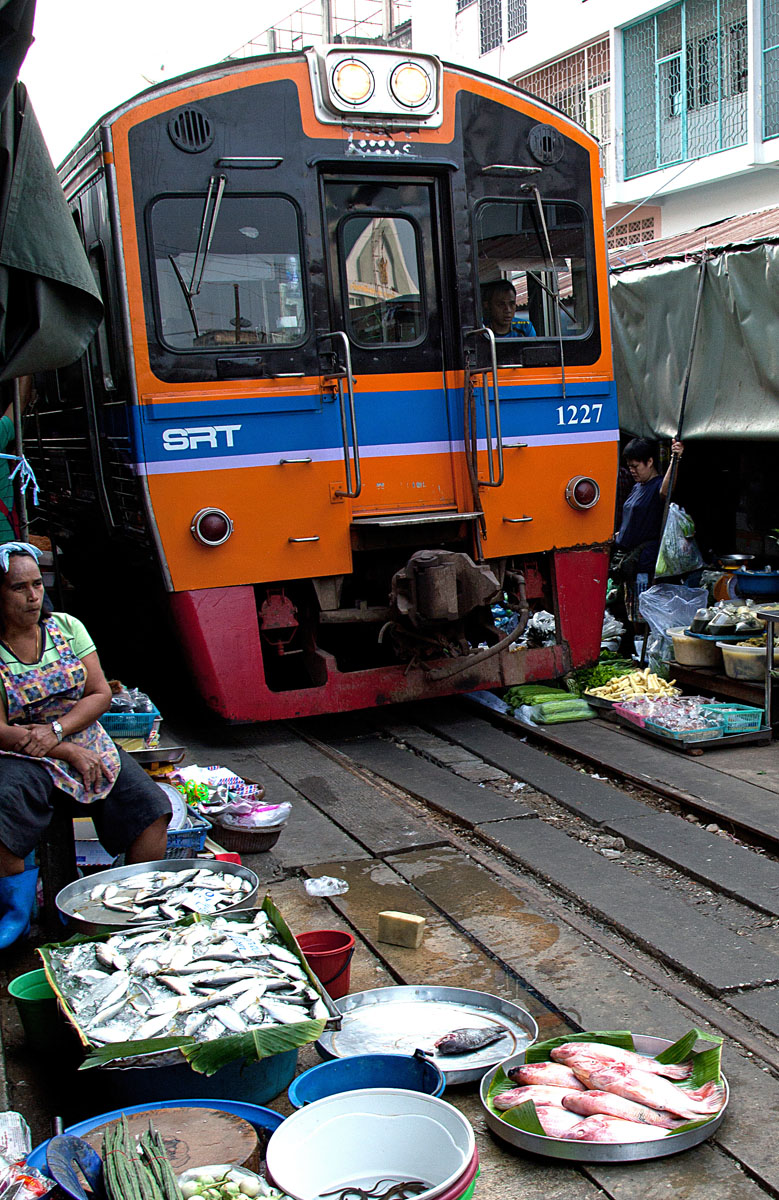
Mae Khlong Railway. Thailand’s shortest rail line, the 67-km Mae Khlong Railway, running between Bangkok’s Wong Wian Yai and Samut Songkhram, terminates amid the melee of a local market. Thais call the place Talat Rohm Hoop — Umbrella Pull Down Market — but foreigners know it better as the Risky Market. Why? The rail tracks run through the middle of the crowded marketplace. The morning train, a two-carriage electric service, arrives with a horn blast. Hawkers rush to pull back their awnings (“umbrellas”), with only seconds to spare. As the market parts before the train like the Red Sea before Moses, the train rumbles past, inches from your face. Risky marketing, indeed.
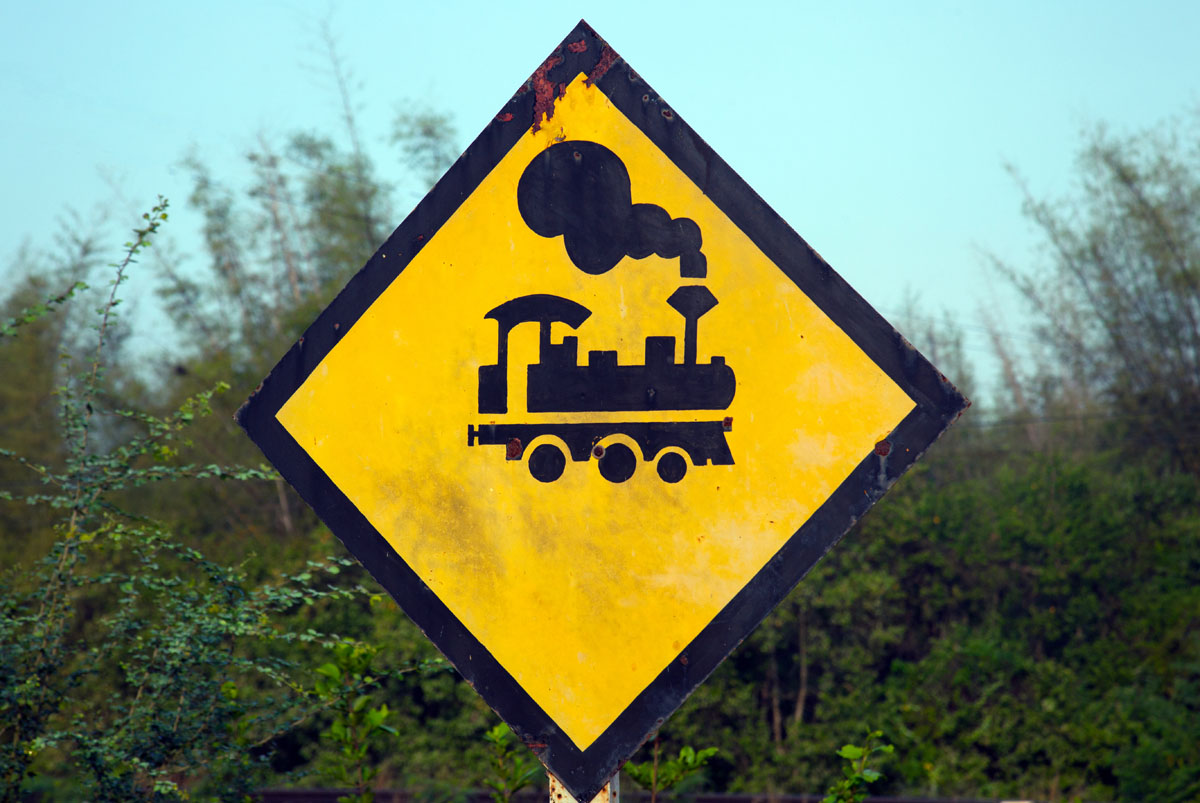
Kanchanaburi “Death Railway”. A sombre reminder of Japan’s infamous World War II Burma-Siam Railway can be visited 80-km west of Bangkok in Kanchanaburi. Tourists come to see its “Bridge on the River Kwai” (made famous in the 1956 movie of that name), although the bridge we see today is not the original structure. The “Death Railway” wasn’t named lightly. Spare a thought here for those who perished building the line — over 80,000 Thai and other Asian laborers, and 12,600 Allied POWs.
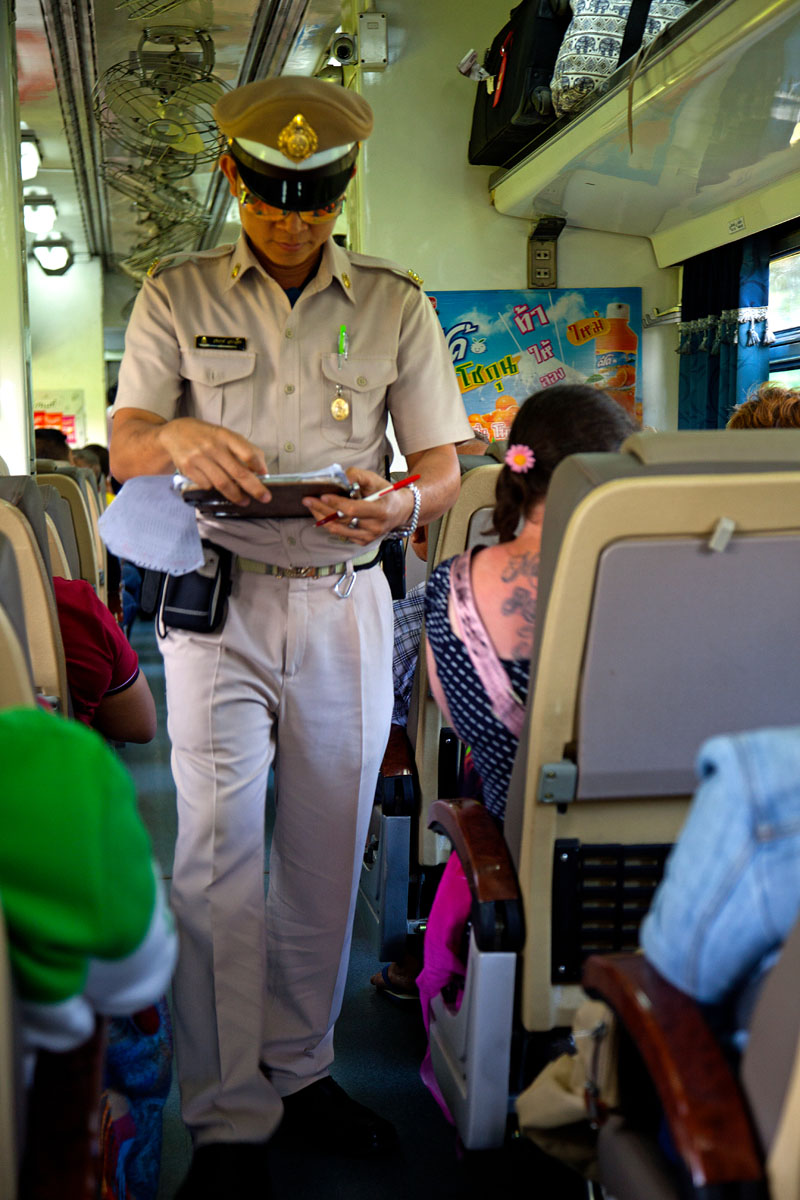
Bangkok-Vientiane Line. Aboard this train you’ll cross Thailand to the northeast and view Isaan in comfort but the service doesn’t go all the way Vientiane. At Nong Khai passengers cross the Thai-Lao border bridge on the Mekong River and then join a connecting shuttle train that terminates at Thanaleng, 20-km short of the Lao capital. This overnight trip is superior to its Bangkok—Chiang Mai cousin, having new carriages, better dining facilities and seats with their own power outlets.
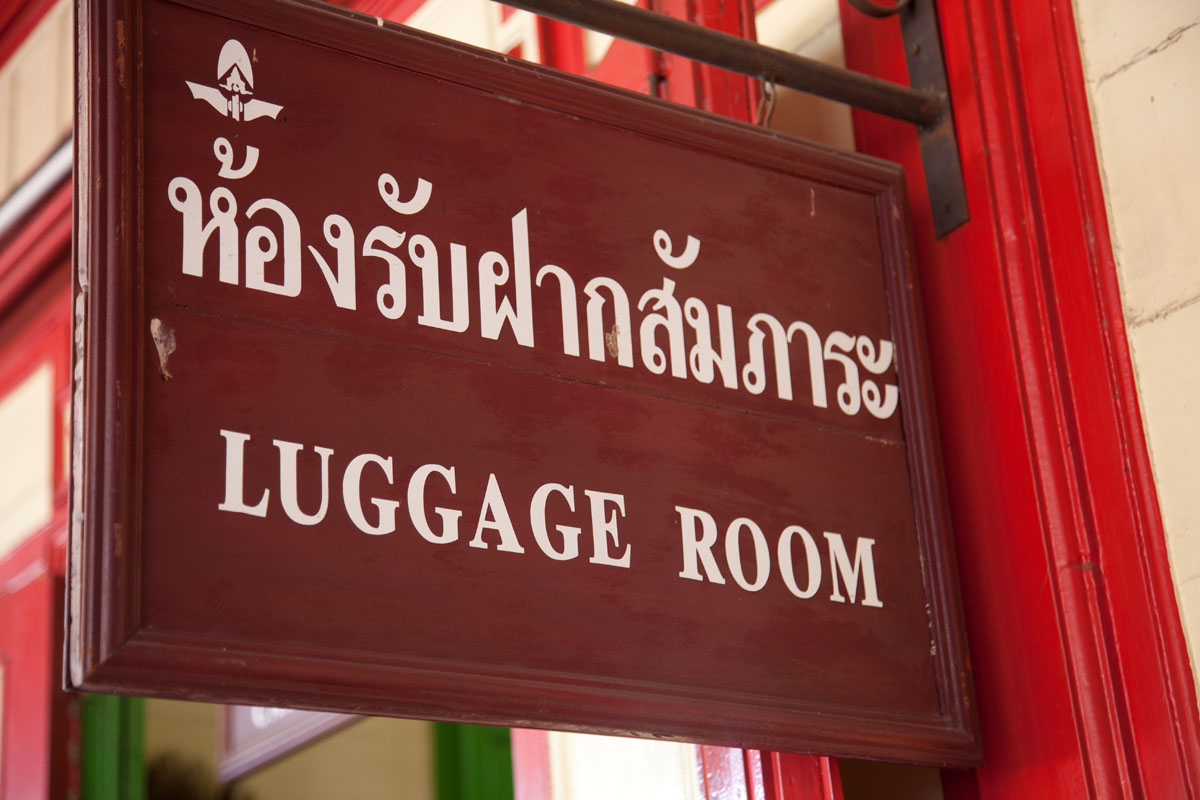
Bangkok—Hua Hin-Surathani. Riding south you’ll pass through Hua Hin, 200 km from Bangkok. In the 1920s when a line was first pushed through to British Malaya, Hua Hin’s most important structure was its railway station. While you’re at the platform check out the historic Royal Waiting Room that looks like a cross between a Buddhist temple and a ticket office. Rolling on — blink and you’ll miss it — is tiny Wang Duan beside the Gulf of Thailand, south of Prachuap Khiri Khan. This whistle-stop (where the trains don’t whistle and rarely stop) has a claim to fame and a signboard to prove it. This pinch-point between the Gulf and the Myanmar border to the west is, as the sign proclaims, “The Narrowest of Thailand. 10.96 kilometres.” A few hours later your reach Surathani, jumping off spot for the ferry to Koh Samui.
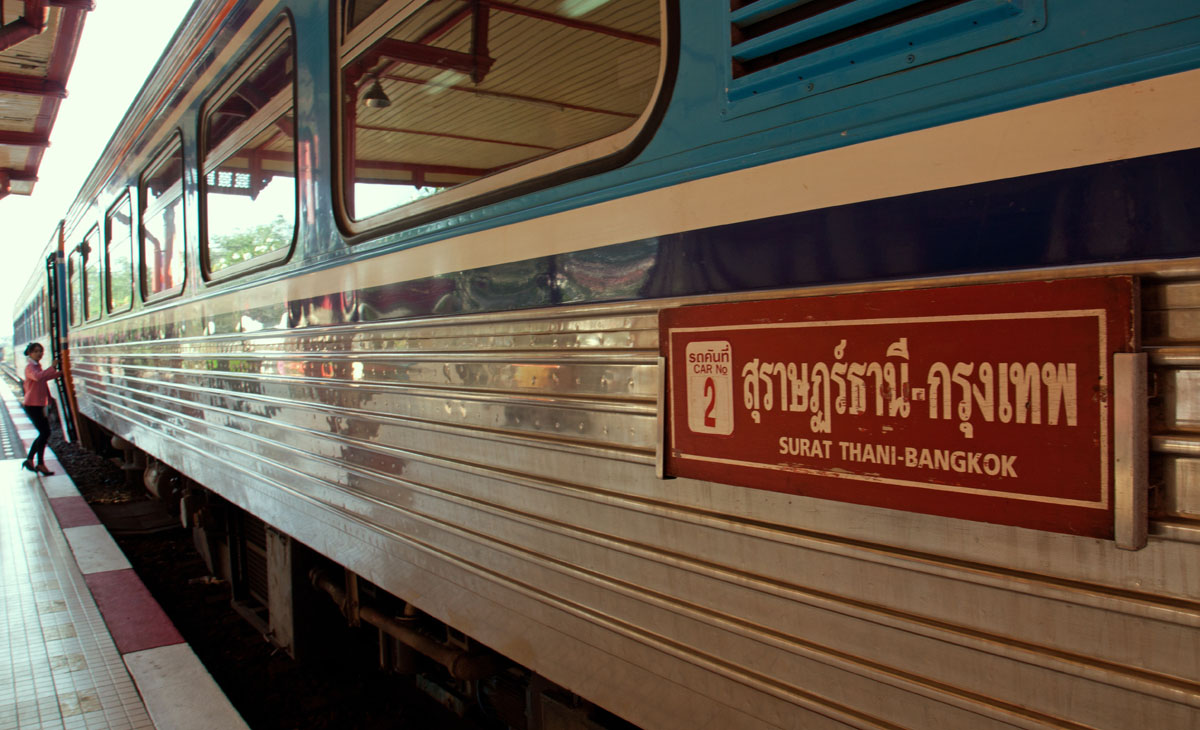
Thai Train Travel Tips
- Traveling in Thailand by rail is highly economical and also wise, given the country’s heavy road fatalities.
- Reserve your seat in advance especially if travelling near public holidays or on the popular Chiang Mai service. For convenience (and a small extra fee), book through an agent.
- With a sleeper berth, go for the slightly more expensive lower bunk; the upper one is narrower and, being near the A/C vent, colder.
- More information see: www.thailandbytrain.com; www.seat61.com/thailand; www.12go.asia
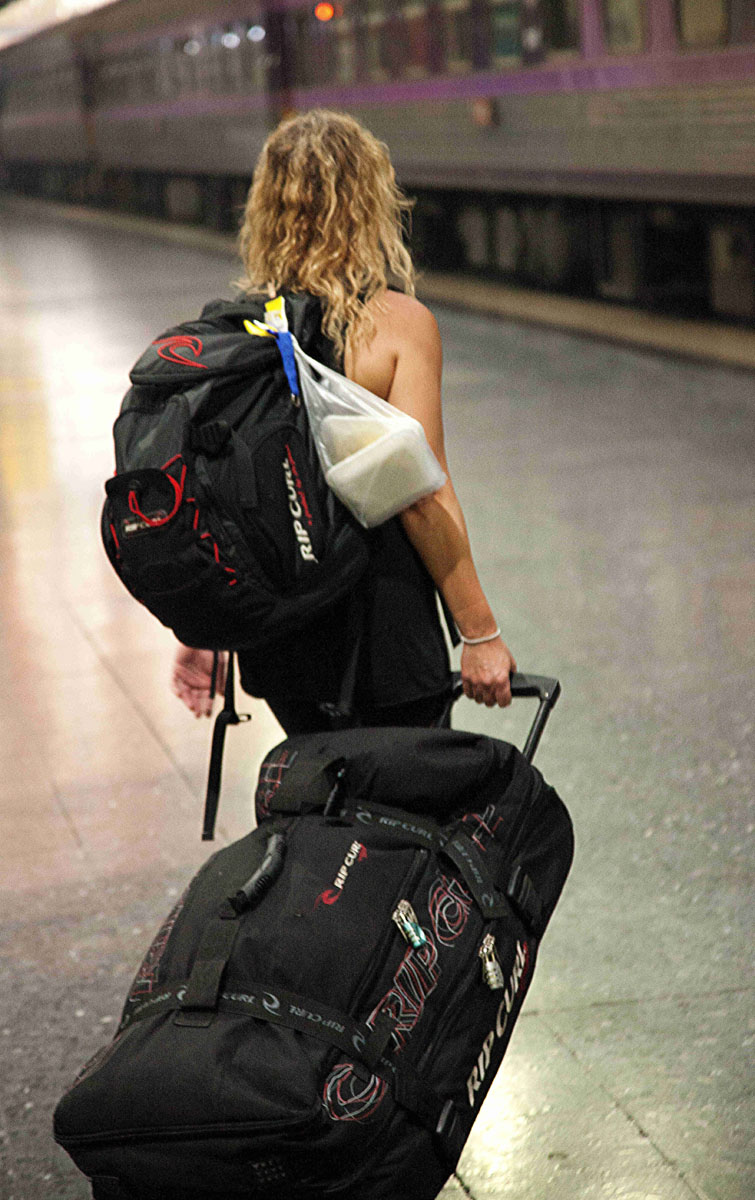
Words and photographs © John Borthwick 2020

